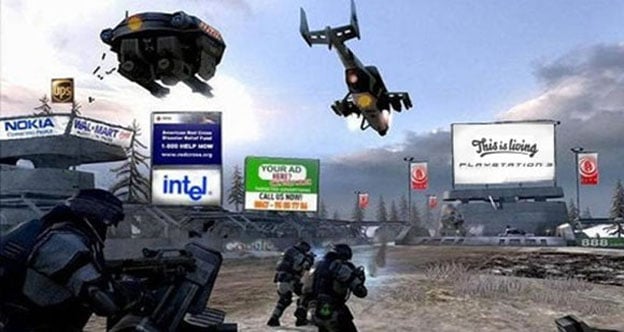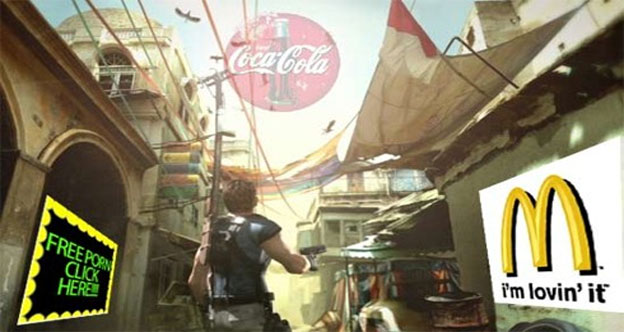In-Game Ads: Are They A Good Or Bad Thing?
In-game advertising: those words conjure horrific Minority Report-style images of walking down the street and having video billboards calling after you by name. In the last ten years, product placement has seen a meteoric rise in movies, on TV, and most notably, in video games. That it’s happening in games is really no surprise, considering the print industry’s precipitous downward spiral and the fact that digital video recording has given us a reliable method of completely avoiding TV advertising if we want to. As a result, more and more product pushers are insinuating themselves into our interactive entertainment, and it seems the gaming public is enjoying or at least not minding it. This might indicate that the arrangement is beneficial to both advertisers and gamers, but upon taking a closer look, can we really say in-game advertising is a good thing for games?

In the past, brand name products knew their place. They’d appear as part of a game’s background or ambience. We might have seen a billboard for a certain automobile as our characters ran down an alley or passed a vending machine filled with a popular soft drink while investigating an evil corporation. These days subtlety takes a back seat to sales as characters blatantly wear, use, and drive brand-name items, and advertisers pay for the right to cast their products not as modest supporting actors, but front and center, alongside character leads. The process is being driven by ad firms like San Francisco’s Double Fusion who specializes in publisher/advertiser matchmaking, researches various game titles’ audiences and advises manufacturers regarding which game their product should appear in. They can boast placing Chrysler in Splinter Cell: Double Agent, Jeep in Tomb Raider, and Dell in Ultimate Baseball Online, to name but a few.
Naturally, advertisers benefit from this arrangement, re-gaining access to audiences they may in recent years have lost, but what do game publishers get out of it? Well…money, and lots of it. With the cost of titles skyrocketing into the $20-30 million dollar range, publishers need as much help carrying the financial burden as they can get. And if they can take a half million dollars free and clear just for allowing designer Ben Sherman to come inside their game and set up virtual shop, then why the heck not? Of course, while offline console titles might be the brass ring every advertiser’s hoping to grab, online games represent much more ideal advertising venues. In online games, ads can be updated and customized like never before and in future, could theoretically use gamer profiles within games to direct specific ads to specific customers.

Obviously, product placement in games has no downside to speak of for advertisers and game publishers. But what about for gamers and the games themselves? For gamers, if the product placement is non-intrusive and adds an amusing visual element—like Playboy’s signage in Dead Rising II—then it seems harmless enough. It’s also not bad if it’s handled tactfully, like if a character happens to use a certain brand of phone or drives a certain kind of car but attention isn’t drawn directly to it. Including real life brands can also add an extra element of realism to a game (this for instance, was the intent of THQ in putting Lumber Liquidators in its recent shooter, Homefront). Once advertising and product placement is in your face enough to start interfering with the gaming experience, however, that’s another story.
- Page 1
- Page 2
